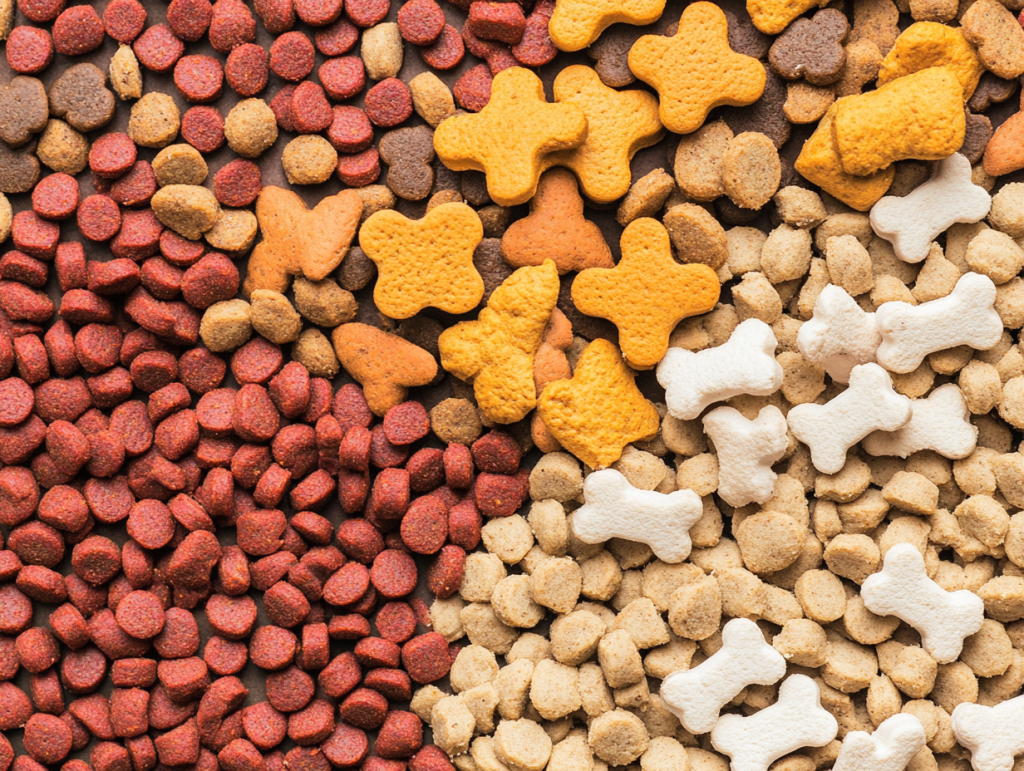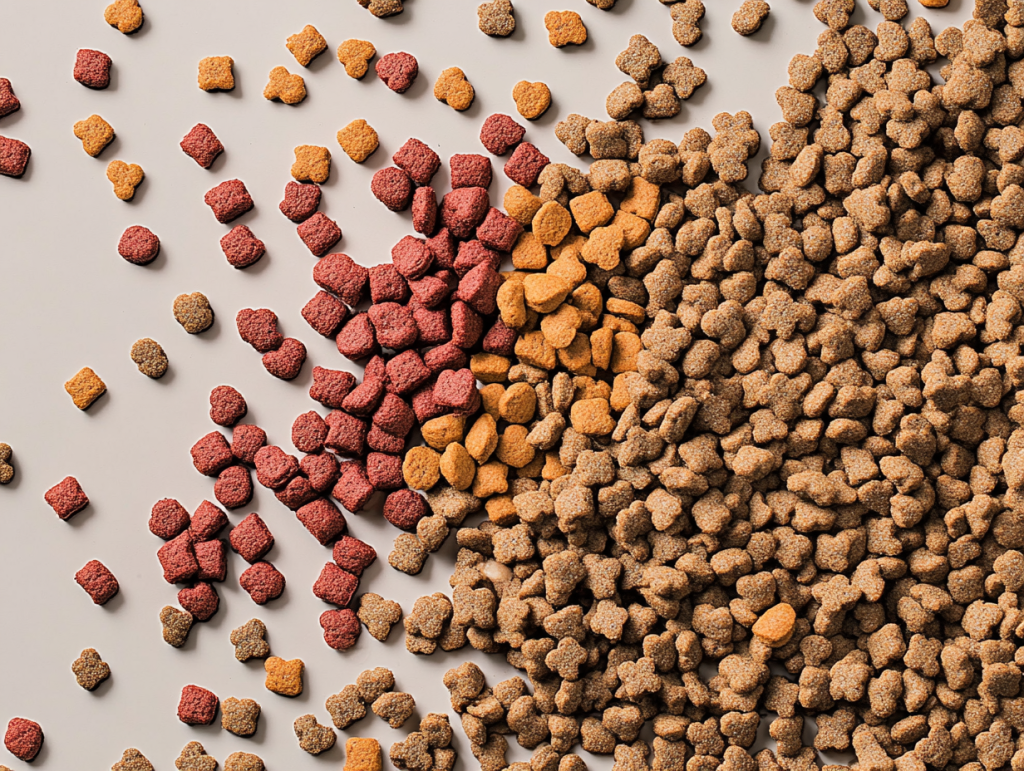Understanding the intricacies of dog food can feel like a daunting task. However, once you break it down into manageable parts, the process becomes simpler and more approachable. By understanding your dog’s dietary needs and the various options available, you can make a decision that ensures your pet enjoys a balanced and nutritious diet.
Understanding Different Types of Dog Food

First, it’s important to understand the different types of dog food available. From dry kibble to wet canned food, each type has its own benefits and drawbacks. For the purpose of this article, we’ll focus on dry dog food, which is often referred to as kibble. Understanding these differences is key to making a well-informed decision that aligns with your dog’s specific needs and your lifestyle.
Wet dog food can be appealing to dogs due to its rich flavors and moisture content, which can be beneficial for hydration. However, it often requires refrigeration and can be more expensive. On the other hand, dry dog food offers convenience and cost-effectiveness, making it a popular choice among dog owners. It is crucial to weigh these pros and cons to find a solution that works best for both you and your pet.
Why Choose Dry Dog Food?
Dry dog food is a popular choice for many pet owners because it’s convenient, has a longer shelf life, and is often more affordable than wet food. Additionally, dry kibble can help maintain dental health by reducing plaque buildup as your dog chews. This not only saves time and money but also promotes healthier teeth and gums.
Moreover, dry dog food is easy to store and measure, making it ideal for portion control, which is crucial for maintaining a healthy weight. It’s also less messy and can be left out for longer periods without spoiling, allowing your dog to graze throughout the day. This flexibility is particularly beneficial for busy households or multi-pet families.
Different Types of Dry Dog Food
There are several types of dry dog food available, including:
- Standard Kibble: The most common type of dry dog food, made from a mix of meat, grains, and vegetables. This variety typically offers a balanced diet for most dogs and is widely available at a range of price points.
- Grain-Free Kibble: Formulated without grains for dogs with allergies or sensitivities. These options often substitute grains with legumes or potatoes, providing essential nutrients without triggering allergic reactions.
- High-Protein Kibble: Contains higher levels of protein for active or working dogs. This type is ideal for breeds that require more energy or have higher activity levels, supporting muscle maintenance and repair.
- Limited Ingredient Kibble: Made with fewer ingredients for dogs with food sensitivities. These formulas simplify diets to avoid potential allergens and make it easier to pinpoint dietary issues.
Understanding these categories allows you to tailor your choice to your dog’s specific dietary needs, ensuring they receive the optimal balance of nutrients.
Factors to Consider When Choosing Dry Dog Food

When selecting the best dry dog food, consider the following factors:
Nutritional Needs
Different dogs have different nutritional needs based on their age, size, breed, and activity level. Puppies, adult dogs, and senior dogs all require different nutrient profiles. For example, puppy food brands often include more protein and fat to support growth, while senior dog food may have fewer calories and added joint support. Recognizing these differences is vital for promoting your dog’s health at every stage of life.
Additionally, consider your dog’s lifestyle. An active dog will need more calories and protein than a less active or sedentary dog. Breeds with unique health considerations may also benefit from specialized formulas to address specific dietary needs, such as joint health, skin conditions, or digestive support.
Ingredients
Look for high-quality ingredients in the dog food brand names you’re considering. The first ingredient should be a named animal protein, such as chicken or beef. Avoid foods with unnamed meat by-products or fillers like corn and soy. Whole grains, vegetables, and fruits are good sources of carbohydrates, vitamins, and minerals. These components not only provide energy but also support various bodily functions and overall health.
Furthermore, consider the source of the ingredients. Brands that prioritize sustainably sourced and organic ingredients often offer superior quality. Reading ingredient labels carefully can help you avoid artificial preservatives, colors, and flavors, which are unnecessary additives that may harm your dog’s health over time.
Brand Reputation
Research the reputation of the pet food brands you’re considering. Read reviews and check for any past recalls. Some of the top 10 dog food brands include Royal Canin, Hill’s Science Diet, and Blue Buffalo. High end dog food brands may offer premium ingredients but are often more expensive. Investing in a reputable brand can provide peace of mind knowing that your dog is consuming safe and effective products.
In addition to recalls, look for brands that have a long-standing history of quality and transparency. Brands that engage in rigorous testing and quality control measures tend to produce more reliable products. Furthermore, companies that provide detailed information about their sourcing and manufacturing processes demonstrate a commitment to consumer trust and product safety.
Price and Budget
While it’s important to feed your dog high-quality food, it’s also essential to consider your budget. There are good dog kibble brands available at various price points. Shop dry dog food by comparing prices and looking for discounts or bulk deals. Balancing cost with quality ensures your pet receives the nutrition they need without straining your finances.
Many brands offer loyalty programs or subscription services that provide discounts over time. Consider these options to save money while still offering your pet premium nutrition. Remember, investing in quality food now can lead to fewer health issues and vet bills down the line, making it a worthwhile investment in your dog’s well-being.
Evaluating Dog Food Brands

With so many options, how do you evaluate the different brands of dog food?
Analyzing Labels
When evaluating dog food options, carefully read the labels. Look for the Association of American Feed Control Officials (AAFCO) statement, which indicates that the food meets the nutritional requirements for your dog’s life stage. This certification provides assurance that the food is nutritionally complete and balanced.
In addition to the AAFCO statement, scrutinize the ingredient list for transparency and quality. Ingredients are listed in order of weight, so ensure that high-quality proteins are at the top of the list. Avoid products with excessive fillers, artificial additives, or vague terms like “meat meal” or “animal fat.”
Consulting Your Veterinarian
Your veterinarian is a valuable resource when selecting dry dog food. They can provide personalized recommendations based on your dog’s specific health needs and dietary requirements. Their expertise can guide you towards options that support any medical conditions or dietary restrictions your dog may have.
Veterinarians can also help interpret complex ingredient lists and nutritional information, ensuring you make informed decisions. Regular check-ups and discussions about your pet’s diet will help monitor their health and make necessary dietary adjustments over time.
Trying Samples
Many dog food brands offer samples or smaller bags, allowing you to test different types of dog food brands with your pet before committing to a larger purchase. Pay attention to your dog’s reaction, coat condition, and energy levels to determine if the food is a good fit. Sampling reduces the risk of buying in bulk and discovering that your dog dislikes or reacts poorly to the new food.
Observe any changes in your dog’s digestion, stool quality, and overall demeanor during this trial period. This will help you assess whether the new food is beneficial and enjoyable for your pet. A successful trial can lead to a more confident and satisfying purchasing decision.
Top 10 Dry Dog Foods
Here are ten best dry dog foods that are popular among pet owners:
- Royal Canin Size Health Nutrition – Offers tailored nutrition based on size and age. This brand’s scientific approach ensures precise nutrient delivery for optimal health.
- Hill’s Science Diet Adult – Known for its balanced nutrition and vet recommendations. Their formula supports immune function and promotes healthy skin and coat.
- Blue Buffalo Life Protection Formula – Features real meat and no chicken/poultry by-products. This brand focuses on wholesome, natural ingredients for complete nutrition.
- Purina Pro Plan Savor – Combines crunchy kibble with tender, shredded pieces. This dual-texture approach enhances palatability and encourages consistent eating habits.
- Wellness CORE Grain-Free – High in protein and free from grains and fillers. This formula supports lean muscle development and overall vitality.
- Nutro Ultra Adult Dry Dog Food – Made with a trio of proteins from chicken, lamb, and salmon. This diverse protein source supports a balanced diet and sustained energy.
- Orijen Original Dry Dog Food – Biologically appropriate with a focus on fresh regional ingredients. Orijen prioritizes high-quality, locally sourced components for natural nutrition.
- Merrick Grain-Free Texas Beef & Sweet Potato – Offers high-quality protein and wholesome grains. This formulation is designed to support muscle growth and digestive health.
- Taste of the Wild High Prairie – Features novel proteins like bison and venison. These unique protein sources cater to dogs with specific dietary needs or preferences.
- Canidae All Life Stages – Suitable for dogs of all ages, breeds, and sizes. This versatile formula simplifies feeding in multi-pet households with varied dietary needs.
Conclusion
Selecting the best dry dog food for your pet involves considering their nutritional needs, ingredients, and your budget. By understanding the different types of dog food and evaluating brands carefully, you can make an informed decision that supports your dog’s health and well-being. The right choice will reflect in your pet’s energy, coat condition, and overall happiness.
Remember, the best food for your dog is one that they enjoy and thrive on. Don’t hesitate to consult your veterinarian for guidance and recommendations tailored to your furry friend’s unique needs. By investing time and effort into choosing the right dog food, you contribute significantly to your pet’s quality of life and longevity.